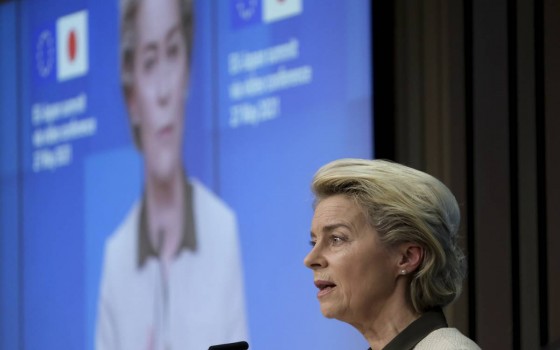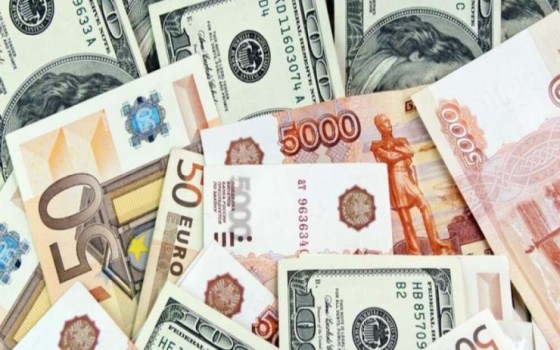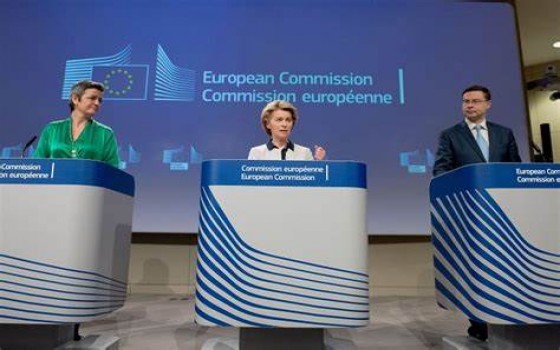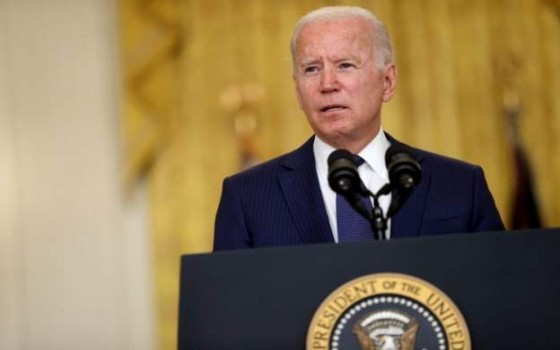
European Union institutions reach an agreement to ban products made with forced labor

- Europe and Arabs
- Tuesday , 5 March 2024 13:31 PM GMT
Brussels: Europe and the Arabs
It has been announced that an interim agreement has been reached on a regulation banning products made using forced labor on EU markets. The provisional agreement reached Tuesday between co-legislators supports the main goal of the proposal to ban the placement and availability on the EU market, or the export from the EU market, of any product manufactured using forced labour. The agreement makes significant amendments to the original proposal to clarify the responsibilities of the committee and the competent national authorities in the investigation and decision-making process. This came in a statement issued by the current rotating Belgian presidency of the Council of Member States following the success of negotiations between representatives of the Council of Member States and representatives of the European Parliament. The statement quoted Pierre-Yves Dermany, Belgian Deputy Prime Minister and Minister of Economy and Employment, as saying, “It is appalling that slavery and forced labor still exist in The world in the 21st century. This heinous crime must be eradicated and the first step to achieving this is to break the business model of companies that exploit workers. Through this regulation, we want to ensure that there is no place for their products in our single market, whether they are manufactured in Europe or outside".
Database of forced labor risk areas and products
The co-legislators agreed that, to facilitate the implementation of this regulation, the Commission will establish a database containing verifiable and regularly updated information on the risks of forced labour, including reports from international organizations (such as the International Labor Organization). The database should support the work of the Committee and competent national authorities in assessing potential violations of this regulation.
Risk-based approach
The Interim Agreement sets out clear criteria that must be applied by the Committee and the competent national authorities when assessing the possibility of violations of this regulation. These standards are:
The extent and severity of suspected forced labor, including whether state-imposed forced labor may be a concern
The quantity or volume of products placed or available in the Union market
The share of product parts potentially made through forced labor in the final product
The proximity of economic actors to suspects represents risks of forced labor in their supply chain, as well as their leverage to address them
The Commission will issue guidelines to economic operators and competent authorities to assist them in complying with the requirements of this Regulation, including best practices for ending and addressing different types of forced labour. These guidelines will also include accompanying measures for micro, small and medium-sized enterprises, which may be available through the Single Forced Labor Portal.
Who will lead the investigations?
The agreement reached by the two lawmakers sets criteria for determining which authority should lead investigations. The Commission will lead investigations outside the European Union. Where the risks are in the territory of a Member State, the competent authority of that Member State will lead the investigations. If, while assessing the possibility of violations of this Regulation, the competent authorities find new information about suspected forced labour, they must inform the competent authority of other Member States, provided that the suspected forced labor takes place in the territory of that Member State. Likewise, they must inform the Commission if suspected acts of forced labor are occurring outside the EU.
The agreement reached today ensures that economic actors can be heard at all stages of the investigation, as appropriate. It also ensures that other relevant information is taken into account.
The final decision (i.e. ban, recall and disposal of the product made with forced labour) will be made by the authority that led the investigation. The decision taken by the national authority applies in all other Member States on the basis of the principle of mutual recognition.
In cases of supply risks of critical products made using forced labour, the competent authority can decide not to enforce their disposal, and instead order the economic operator to withhold the product until it can demonstrate that there is no longer forced labor in its or the operations in question. supply chains.
The Interim Agreement clarifies that if part of a product found to be in violation of this regulation is replaceable, the disposal order applies only to the part in question. For example, if a part of a car was manufactured using forced labor, that part must be disposed of, but not the entire car. The vehicle manufacturer will have to find a new supplier for this part or ensure it is not made by slave labor. However, if the tomatoes used to make the sauce were produced using forced labor, all of the sauce must be discarded.
Now the interim agreement reached with the European Parliament needs to be ratified and formally adopted by the two institutions.
There are approximately 27.6 million people in forced labor worldwide, in many industries and on every continent. Most forced labor takes place in the private sector, while some is imposed by public authorities.
The Commission proposed a regulation to ban products made through forced labor in the EU on 14 September 2022. The Council adopted its negotiating position on 26 January 2024.












No Comments Found